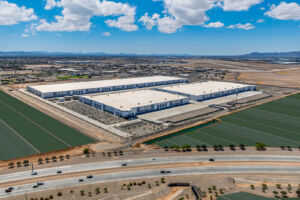2020 is already shaping up to be a big year, and with it comes new technologies, abilities, and innovative tech. As technology is evolving, the capabilities for online digital marketing, and outdoor digital billboards are too. This means you can be smarter with your data, using a clever integration of data and tech to create long-lasting and effective campaigns.
But how? Follow us as we explore some of the newest trends that we predict this year for digital advertising, and outdoor digital billboards.
Digital advertising
Social media: What’s happening?!
Facebook is no longer the social media kingpin, a shock to many advertisers, but this isn’t any different from the downfall of Myspace. Over 40% of Facebook users are 65+, meaning that Facebook is slowly but surely losing traction with the younger demographics, who are growing in strength in the market for their buying power. Facebook has been known for spreading political propaganda, cyberbullying, fake news, and since the data breach in 2018, it has lost some credibility. Most Gen Z’ers use Facebook for events, and for Messenger only… But it doesn’t mean that Gen Z and Millennials are difficult to market to. They’re simply looking elsewhere, instead, leaning towards Instagram.
Instagram, The Gram, IG, or Insta. There are already over one billion users on the app, and is growing to be one of the fastest growing social media platforms to date. The use of clear visuals with a concise caption keeps the average IG user’s attention piqued. Studies show that on average, Gen Z’s attention span is approx 6 seconds, whereas Millennials are between 8 – 15 seconds. That’s an incredibly short time to create a meaningful connection with a user, regardless of whether it’s an advertisement, or simply a picture.
Chatbots on social media
Customer service is not always an easy thing to manage, whether it’s human labour or simply how tough the job can be sometimes. Chatbots are the new customer service by removing these costs, acting as a virtual link between the business to point a customer in the right direction, and ideally assist them with completing their requests. Chatbots are powered by AI (Artificial Intelligence) and will learn and develop through interactions, providing a constantly improving service. These customer service reps can provide 24-hour service, instantaneous replies, and reduce your overall costs.
Air New Zealand’s Chatbot ‘Oscar’ is a great example of simplistic AI, asking for the information necessary to progress a query for a booking so when the customer service rep comes on, all of the information is there and ready for them to proceed.
Why are there so many video ads?
Video content improves conversion rates. This is a mobile-oriented market, and text-based content doesn’t do nearly as well as the highly engaging video content. For a consumer, video content provides guidance on products and services, and helps to clearly see where a brand sits, and if the consumer relates to it. Some consumers who align strongly with brand principles will share the video, organically increasing reach and engagement. This is exactly what you want!
If you think of video content and immediately think of the high-powered and expensive ‘Nike’ ads, this is way too complicated. Luckily, you can create a simple GIF or a video using clever illustrations, animations, and text in order to get your product, service, or brand message across. You can even animate a digital banner, or input a video or GIF to a digital banner. Any movement will be eye-catching to the ever-scrolling audience.
Interaction and engagement
Polls, augmented reality, and 360-degree videos are all leveraging this new and innovative technology. Polls on social media are super engaging and feel like the consumers share their voices with you. Augmented reality really kicked off after the launch of Pokemon Go, as users rushed around their cities and countries trying to catch ‘em all. Other companies capatilised on this incredible push forward in technology, developing products and apps straight away. Some fashion brands created an app that allowed a user to scroll through different products and ‘try them on’ using their custom avatar. Other apps allow you to look at the night sky, and see what planets and constellations are around you, simply by knowing your location. 360-degree videos are also super powerful, giving the user the ‘full experience’ of the video. During quarantine, a heap of travel companies released 360-degree video content, letting the user watch and engage until all parts of their location was explored.
Outdoor Digital Billboards
Can you integrate digital billboards and live data?
Absolutely possible, and happening in New Zealand as we speak! Digital billboards have a whole back-end that can support a heap of data, whether you are thinking of using social media inputs (such as tracking a hashtag), or using the weather, the capabilities are endless. A great example is McDonald’s live weather feeds based over in the UK. Creating a clear visual design that plays on both the weather and their food is integrated using a live data feed from a local weather news source. This pulls the data and the visuals on to the billboard for the audience to get not only information, but increase McDonald’s brand love.
A dashboard for a billboard?
Dashboards are an excellent way to display data from your digital billboard, allowing you to, in real-time, see the impacts of your campaign. Some dashboards contain super sensitive company data, so this is hidden behind a secure login using personalised username and passwords. This can be easily achieved through the use of the cloud, which integrates the data from the billboard, the website, and other marketing touchpoints you have to create one seamless information source for you and your team to use.
TV screen to billboard screen
Outdoor digital signage is looking to become the next step in bringing people together. Whether it’s a live sports match by a bar, or a dramatic dance by a museum, we have a feeling that the integration of live TV feeds and outdoor digital billboards will help to attract the attention of audiences from everywhere. It provides an even greater opportunity for advertisers to talk to their ideal customer, based on what’s being played, without needing to pay the high TV commercial spots.
Chat with the experts at Lighthouse Digital today for a personalized approach to your integrated marketing campaign.



